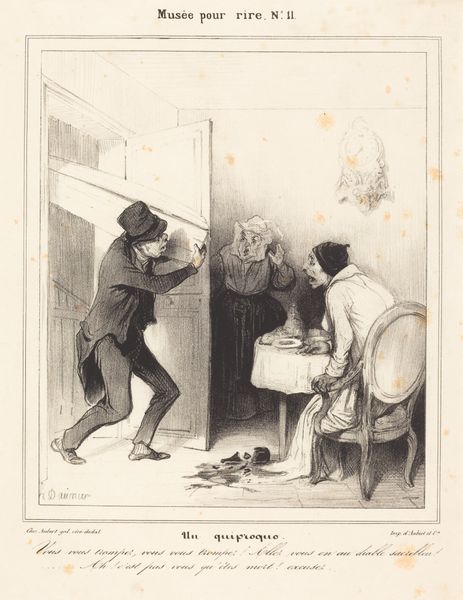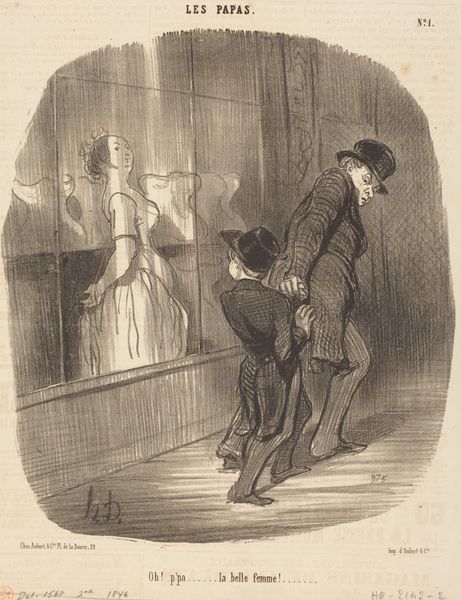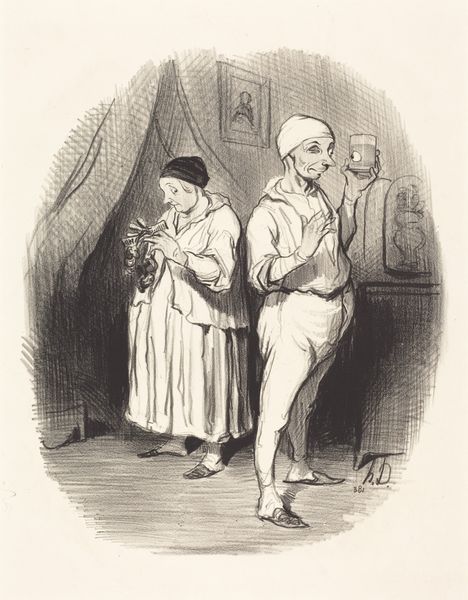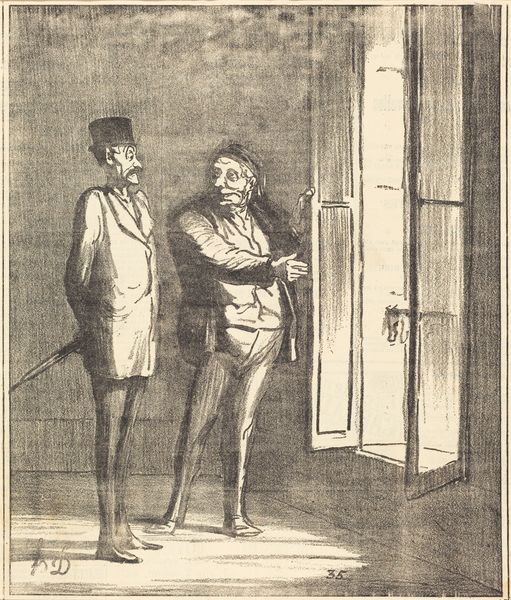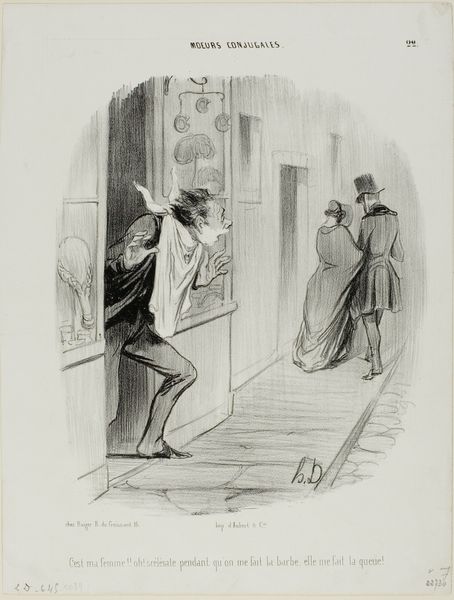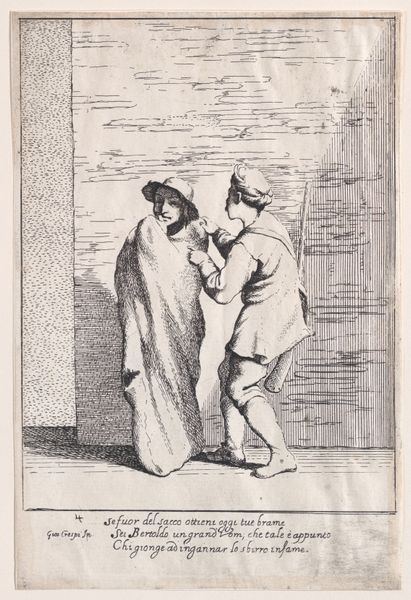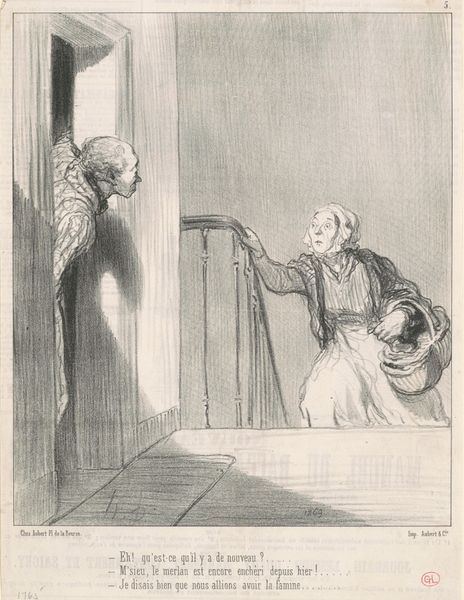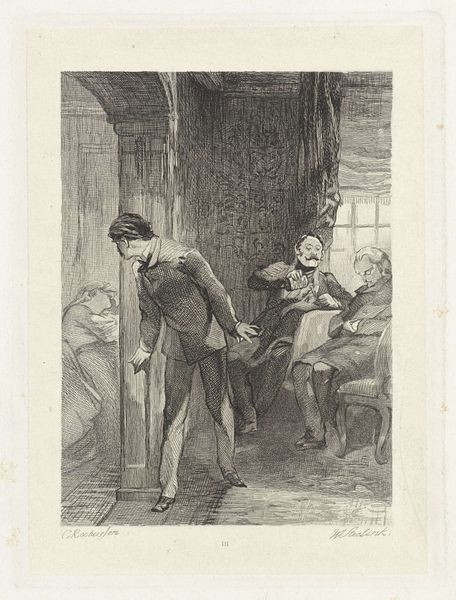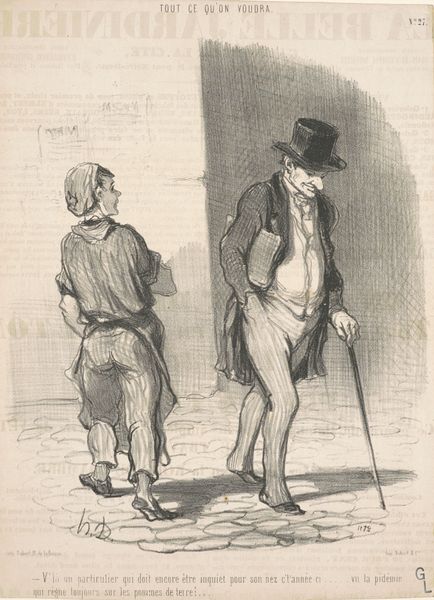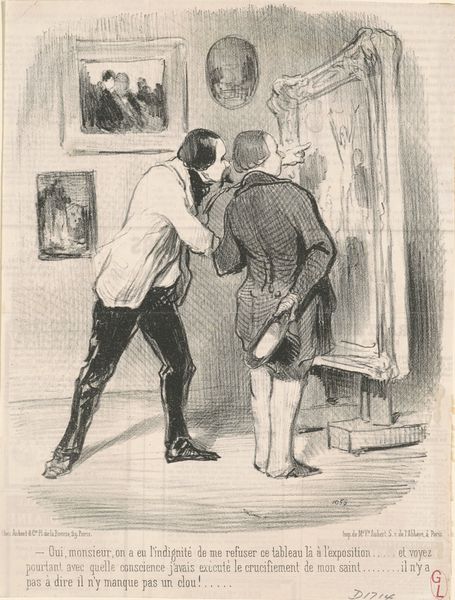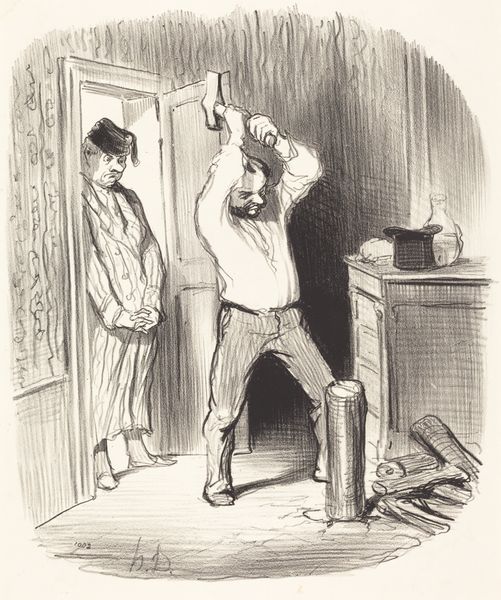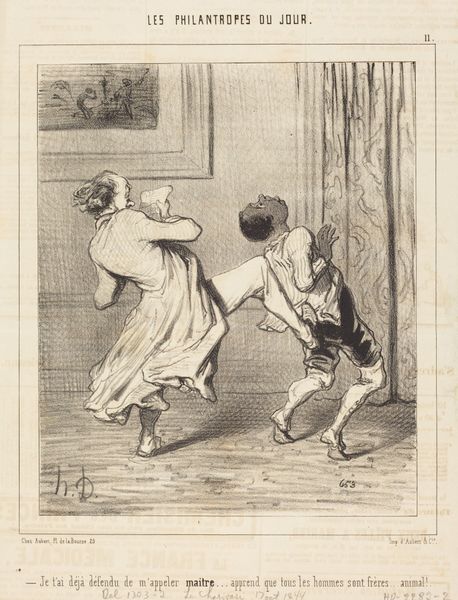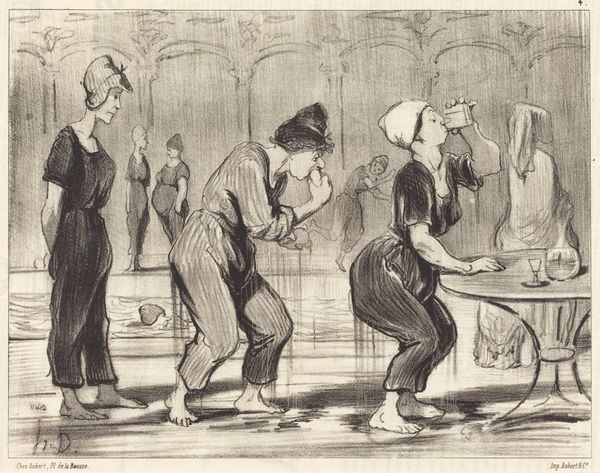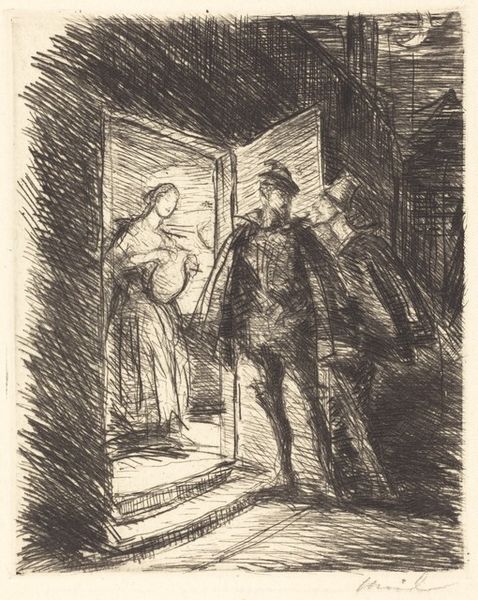
lithograph, print
#
narrative-art
#
lithograph
# print
#
caricature
#
romanticism
#
genre-painting
#
history-painting
Copyright: National Gallery of Art: CC0 1.0
Curator: At first glance, this feels like a snapshot of anxious anticipation, or maybe dread. Editor: Indeed, there’s a palpable tension. We're looking at "La veille du 13 Juin," or "The Eve of June 13th," a lithograph dating from the 19th century, by Honoré Daumier. It's an image dripping with the kind of charged expectancy that comes before a major event. Curator: That title… the 13th. It does sound ominous, like the setup to a scary story. The body language of the figures… peering, straining... it’s all about this unnamed, unseen threat. The Romantic art movement of the era was so involved with themes of drama and anticipation. Editor: Daumier was definitely mining the rich symbolic territory of Romanticism, using dramatic contrasts of light and shadow to heighten the scene's emotional impact. The couple, are they watching something unfold, some event? The dark window certainly acts as this large symbol of the unknown that awaits, doesn't it? What could they possibly see that inspires such worry, in the dark, I wonder. Curator: Precisely. The historical context is key here. June 13, 1849, was the date of a failed insurrection in Paris. Daumier's lithograph wasn't just a genre scene; it was a politically charged commentary on the anxieties and fears circulating within French society at the time. Editor: And, isn’t that something – how Daumier uses this everyday moment, the couple looking from their window, to hint at something much larger, the historical drama unfolding? Lithography would’ve enabled broader dissemination. Curator: Absolutely. This image acted as visual shorthand, communicating a shared experience of uncertainty. Daumier cleverly employs caricature too; just see the almost comical rendering of the figures themselves, as it accentuates a shared feeling and highlights that universality, even. Editor: Seeing them peering out, and thinking about what's outside that frame - the potential for change, for conflict, the weight of a date hanging heavy... I feel I better understand both the symbolic power and the immediacy this simple looking lithograph offered 19th century audiences. It's the quiet moments before big events that can be the most haunting. Curator: Very true, it’s as if Daumier captured something universal, beyond just the politics; he got to the raw feelings that historical change evokes in our souls. It does seem like he was a kind of time-traveling anthropologist!
Comments
No comments
Be the first to comment and join the conversation on the ultimate creative platform.
